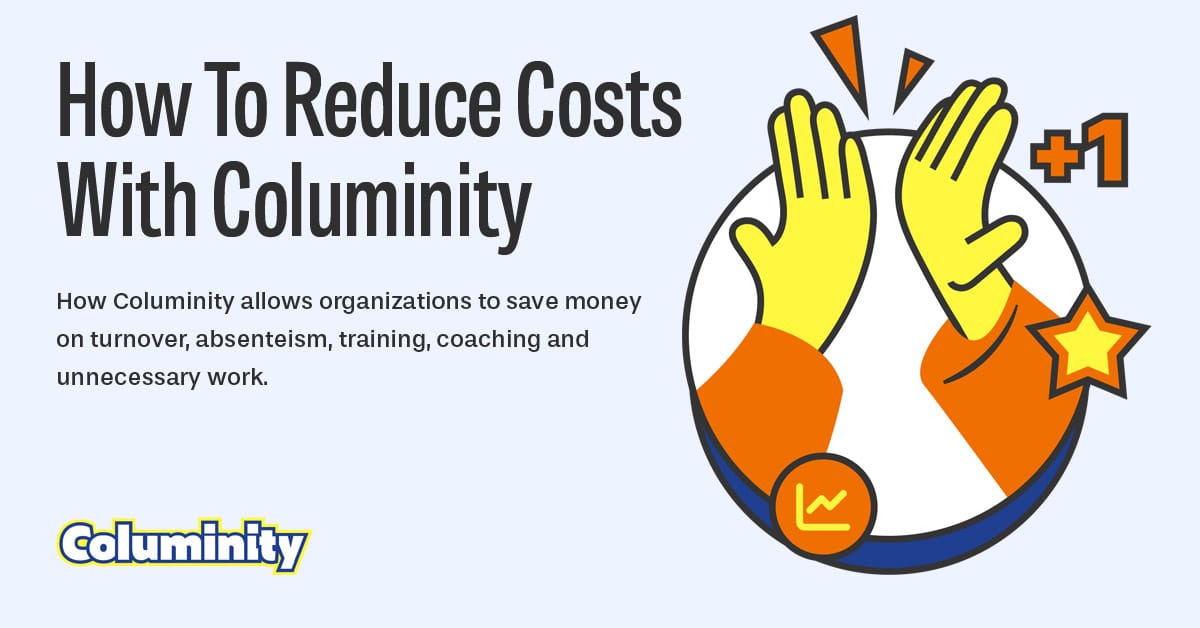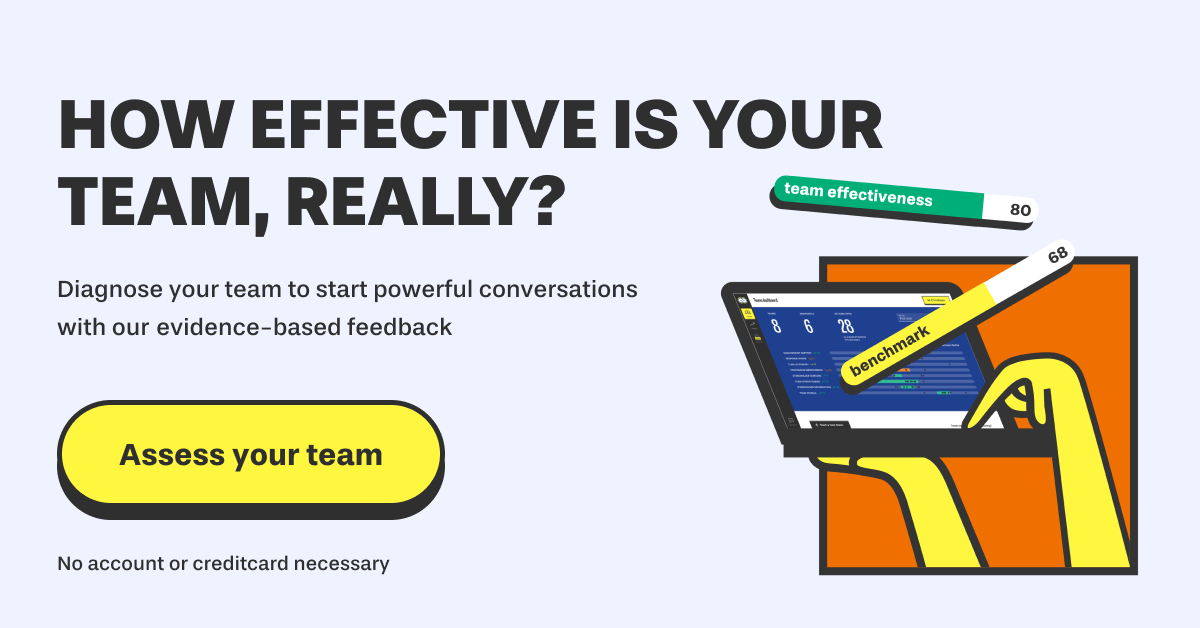How To Reduce Costs With Columinity

When considering a paid plan, customers often ask, "How will using Columinity help us reduce costs?" It’s a fair question. Even though the cost is only €240 per team per year, organizations want to ensure they see actual returns on their investment. This post will help you build a strong business case for Columinity.
Reduce turnover costs
Employee turnover is expensive. Recruiting, hiring, onboarding, and training a new employee typically costs between €50,000 and €150,000 per person, with highly skilled employees falling on the higher end. Studies estimate hiring costs at 121% of an employee’s annual salary.
One of the biggest reasons employees leave? Low job satisfaction. A McKinsey study found that 21% of job departures are due to dissatisfaction, and stress increases turnover by 50% (American Institute of Stress).
How does Columinity help?
- Monitor team morale proactively. High morale and job satisfaction significantly reduce turnover and absenteeism (Hackett & Guion, 1989). Team morale is an integral part of the team effectiveness measure in Columinity and is significantly higher for effective teams. Columinity continuously tracks team morale, allowing teams and leaders to address issues before they lead to resignations.
- Measure key well-being factors. Psychological safety, shared learning, leadership support, and autonomy all impact retention. By tracking these metrics, Columinity helps organizations prevent unnecessary turnover.
✅ ROI Example: If Columinity helps retain just one employee earning €80,000, it saves €96,800 in replacement costs—meaning that for 100 teams, the ROI would be at least 400%.
Reduce costs of unnecessary work
Teams often spend time on work that, in hindsight, wasn’t needed—wasting time and resources. This happens due to insufficient early feedback, unnecessary meetings, misalignment with stakeholders, or unclear strategies. Research shows that up to 45% of features in software products go unused (Eder et al., 2012), and organizations with over 100 employees waste an estimated €400,000 per year on unnecessary meetings.
How does Columinity help?
- Focus on team effectiveness. By focusing on team effectiveness, Columinity helps teams to focus on the work that delivers actual value to stakeholders. Consequently, they can stop spending time on unnecessary features and meetings.
- Stakeholder feedback. Columinity allows teams to collect feedback directly from stakeholders. This includes measures of how valuable stakeholders find the work done by teams and their satisfaction with release frequency and responsiveness.
- Measure clarity. Columinity measures key factors directly linked to value, such as 'Value Focus' and 'Feedback Gathering Quality.' If diagnostics reveal that teams struggle to define what is truly valuable, clarifying this with them can eliminate unnecessary meetings and work.
✅ ROI Example: If Columinity prevents just one unnecessary feature (120 hours of work), it saves €12,000—an ROI of 4,900% for a single team’s paid plan.
✅ ROI Example: Eliminating one two-hour, six-person meeting saves €1,200, an ROI of 400% per team.
Reduce coaching costs
Many companies invest in coaches (Agile Coaches, Scrum Masters, Kanban Coaches) to support teams, improve productivity, and remove impediments. These roles typically earn between €70,000 and €180,000 per year, with a coach-to-team ratio of about 1:3. For a company with 50 engineering teams, that equates to €1 million in coaching salaries annually.
How does Columinity help?
- Evidence-based insights. The scientific models in Columinity allow organizations to evaluate which interventions and activities improve team effectiveness. This provides a good baseline to assess the ROI of coaching activities and related interventions.
- Shift from active facilitation to support. Instead of always leading retrospectives and diagnostics, coaches can focus on higher-impact work while teams self-diagnose with Columinity. If teams need help facilitating sessions or removing impediments, they can request help from coaches through Columinity.
- Optimize coaching resources. With better diagnostics, organizations can allocate coaching support where needed most.
✅ ROI Example: If Columinity reduces coaching needs by just 1 full-time coach, it covers the cost of a 50-team plan with over 500% ROI.
Reduce costs due to ineffective training
A typical US-based company spends nearly €1.200 per employee per year on training and personal development. A two-day Agile certification course for 20 people costs between €15,000 and €20,000. But how do you measure whether training truly improves effectiveness?
How does Columinity help?
- Baseline measurement. With 30+ team effectiveness factors, Columinity provides a clear benchmark for assessing whether training impacts performance.
- Targeted training investments. Instead of generic training, Columinity identifies which skills teams really need to develop.
- On-the-job learning. Columinity enables continuous learning within teams, reducing reliance on theoretical courses.
✅ ROI Example: If Columinity helps an organization identify and cancel just one ineffective 20-person training, it saves enough to cover a one-year plan for 80+ teams.
Conclusion a baseline for measuring ROI
With its evidence-based, science-backed models, Columinity allows organizations to measure 30+ factors contributing to team effectiveness. It helps reduce costs in four key areas:
✅ Lower turnover costs by improving job satisfaction and well-being.
✅ Reduce time wasted on meetings and work that isn't productive.
✅ Optimize coaching costs by making interventions more targeted and effective.
✅ Cut training expenses by identifying what teams actually need.
Columinity’s ROI ranges from 400% to 4,000% depending on your organization's context. More importantly, it establishes a solid baseline for measuring the effectiveness of other investments, such as coaching, hiring, and training.
You can evaluate your team(s) with Columinity. Go to columinity.com to try it now. Our free plan is great for individual teams, but with a paid plan, you can track many factors across multiple teams in your organization(s).


